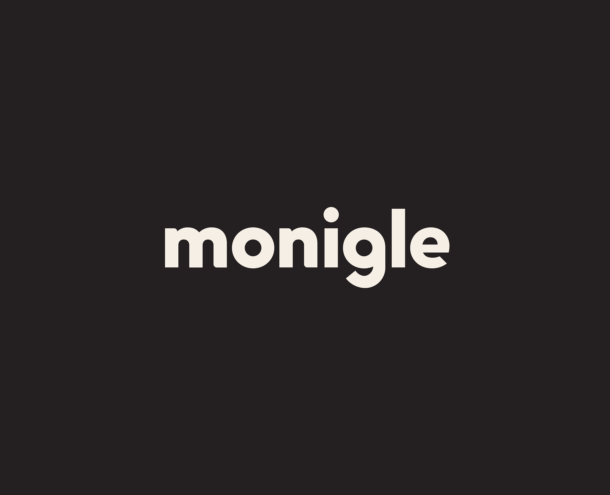Aligning business, brand, and culture to rebuild trust in the tech industry

Trust is one of the most valuable assets a company can have. It allows us to establish a loyal customer base, attract top talent, and gain a competitive advantage in the marketplace. Specifically in the technology industry, recent trends are impacting businesses in new and relatively uncharted ways. The last year or two have been marked by significant challenges, including right-sizing/downsizing, privacy and security concerns, employee burnout, and the rise of artificial intelligence. Compounding these issues is external and market volatility – the broader world and economy have also created a lot of uncertainty.
Combined with the trends in tech and additional external volatility components, now, more than ever, it’s crucial to invest in rebuilding trust. One of the most impactful ways to do this is by leveraging the power of brand to elevate and solidify your reputation, and ultimately drive choice and advocacy.
Trends eroding trust in tech
The technology industry is unique in many ways, and there are several key factors that make its position different, especially regarding trust, within the current landscape:
- Downsizing/rightsizing: the technology industry embarked on a hiring spree during the pandemic, paying astronomical sums to compete for tech skillsets, and often bolstering and overstaffing teams to maintain competitive advantages. However, as 2023 rolled in, balance sheets became highly scrutinized by investors. As of May, over 600 tech companies have laid off employees in 2023. While this can make the balance sheets and revenue numbers better for investors, this also has a significant impact to employee trust within these companies and can damage external reputation with feelings of uncertainty.
- Employee burnout: The technology industry is known for its fast-paced, high-pressure work environment, which can lead to burnout among employees. Burnout coupled with concerns about stability can diminish employee happiness and satisfaction. To rebuild trust, companies must prioritize employee well-being and create a culture that supports work-life balance, mental health, career development, and paint a clear and compelling vision of the future so people want to be part of it.
- Privacy and security concerns: The technology industry has been at the center of many privacy and security controversies in recent years. Data breaches, cyberattacks, and privacy violations have eroded trust in technology companies, particularly those that handle sensitive user data. With brands that have gone through some of these (and even those who haven’t), how customer and employee data is protected is a leading focus for both consumers and brands.
- AI and automation: As the technology industry continues to advance, AI and automation are becoming more prevalent, and there is growing concern about the impact on jobs and society. Technology companies must be transparent about how they are using AI and automation, and how it will impact their employees and customers. Companies must also prioritize ethical considerations and ensure that AI and automation are used in ways that maximize benefits while reducing risk.
- Rapid innovation: The technology industry is constantly evolving, with new technologies and trends emerging all the time. This fast-paced and constantly evolving world can make it difficult to establish a cohesive brand that can easily adapt to whatever the future holds. This puts even more pressure on creating a compelling big idea that sets you apart and all audiences can rally behind, otherwise you can easily get lost in a tactical race of features and functionality.
Learn more: 3 strategies for building consumer trust

An opportunity to leap ahead
The current situation has caused a leveling of the playing field. There is a general skepticism and caution among all players, meaning those who invest now will be able to leapfrog the competition and solidify their place in the hearts and minds of internal and external audiences. By investing in rebuilding trust and reputation, businesses, especially those in tech, can differentiate themselves in the marketplace and establish a deeper connection with their customers and employees.
How brand can help
Internal audience considerations
Internal audiences, such as employees, are critical in building trust, especially now. Attracting and maintaining the top talent is critical to success. Companies must understand their employees’ needs, wants, and desires and how their organization uniquely delivers on those to create a sought-after culture. Further, companies need to understand how employee behaviors align with business and brand goals, ensuring your culture is an enabler, and not a detractor, from achieving your vision.
The leading companies work hard to align business, brand, and culture, and there are several steps you can take to achieve success:
- Understand your culture(s): whether culture mapping or a variety of other internal research methodologies, it is critical to understand your culture today, the types of cultures you have, the needs/wants/desires of employees and prospective talent, and what you can uniquely deliver to set you apart from competitors.
- Connect the vision to the people: In times of significant change, it is critical to paint a clear picture of where you are going, how you are going to get there, and what it means for your employees. This can be accomplished through things like an employee value proposition or employer brand that connects your culture to the business and brand vision in a compelling manner.
- Clarify behaviors: Most companies fall short of articulating exactly what it means to have on-brand behavior, often relying on a set of values that lack differentiation and personality and leave a lot up for interpretation. Articulating the desired commitments and behaviors, as well as providing stories and examples to bring them to life, can go a long way in rallying an organization.
- Design new culture programs: sometimes the need is simply to clarify the culture you have today, but often you need to fundamentally shift the culture to achieve desired business and brand goals. Leveraging your employee and cultural insights, you can design new programs and processes that inspire the desired behaviors and ensure incentives are aligned throughout the organization.
- Educate and recognize: Communication alone often falls short. You need a comprehensive employee engagement and training program to ensure your people are set up for success. This can include proven approaches such as Brand Ambassadors and employee awards programs that consistently recognize and reward on-brand behaviors.
Learn more: A pragmatic approach toward brand scenario planning

External audience considerations
Technology companies must understand how perceptions and choice drivers have shifted with their various external audiences (customers, investors, partners, etc.) to be able to connect more meaningfully. At Monigle, we adopt a human experience model that has been proven by decades of research to drive reputation, choice, and advocacy. By understanding true human and emotional motivators, companies across industries can identify opportunities to clarify your position and establish yourself as a trusted leader with a powerful reputation that drives long-term growth. Like our internal audiences, there are a variety of successful tools we can leverage:
- Understand your audiences: Everything always starts with understanding who your audiences are, their needs/wants/desires, what drives choice and your perceptions compared to competitors. Whether segmentation and persona work, or brand mapping to understand drivers of choice, this work forms the foundation for driving trust and reputation.
- Articulate your story: Your story needs to clearly articulate who you are, why you exist, and why people should choose you. This story can’t just be a functional description of what you do, you must tap into emotional motivators to connect with your audiences and drive choice. Whether B2C, B2B, B2G, etc. it is all H2H (Human to Human). This forms the foundation for building your reputation, setting a compelling vision for the future and your role in it.
- Define and own a category: If possible, a highly effective approach to building reputation and choice is to define a category that you can then own, setting yourself apart from the rest of the industry in a meaningful way. Doing so de-positions your competitors while also quickly establishing perceptions as a leader and innovator.
- Clarify all your offer: One of the most tangible and critical aspects of your brand is your architecture, because it ensures audiences understand all you do and offer, making sure you get the credit you deserve and give people confidence that you are heading in a positive direction. If your architecture is too complex and confusing, it can immediately damage your reputation and decrease trust in your brand and company.
- Create a flexible and dynamic expression: As the world changes rapidly, so do your audiences and needs. If your expression is too rigid or locked down, you will not be able to meet all the needs of your organization. Rather than elements codified in guidelines, think about it as codes and cues that make up a robust toolkit that you can leverage as needed depending on the situation. This also gives you flexibility to quickly adapt to future, unexpected needs while maintaining cohesion. Ultimately, you must shift your mindset from creating touchpoints to creating meaningful moments of impact, which will create a more personalized and human experience that establishes trust.
Learn more: Client story: Bluepeak

Monigle: A partner in rebuilding trust and reputation
Rebuilding trust takes time, effort, and a focus on building a strong brand. Monigle can help companies achieve this goal. We offer comprehensive branding services to help companies define their culture, clarify their brand, and deliver an experience that is proven to drive reputation, choice and advocacy. By partnering with us, technology companies can rebuild trust and create a competitive advantage in the marketplace. To learn more, or have a conversation, reach out to us here.



